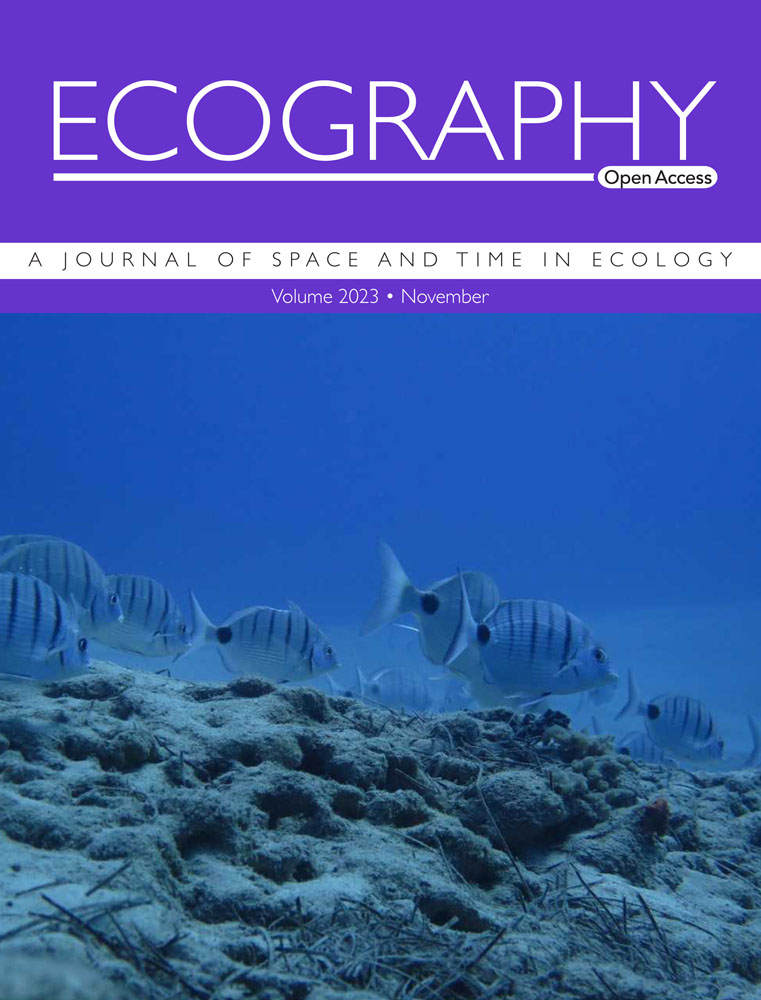北半球山区植物群落对气候变暖的非线性反应受定植和灭绝滞后的影响
IF 4.7
1区 环境科学与生态学
Q1 BIODIVERSITY CONSERVATION
引用次数: 0
摘要
由于来自温暖地区的新物种的到来以及适应寒冷的物种数量的减少,全球变暖正在改变植物群落。然而,通过实验检验群落变化的轨迹和速率的预测具有挑战性,因为我们通常缺乏对未来群落组成的预期,而且大多数气候变暖实验未能纳入新物种的定殖。为了解决这些问题,我们分析了北半球 22 个海拔梯度上 44 个整体群落移植实验的数据。在这些实验中,高海拔群落被移植到低海拔地区,以模拟气候变暖,同时也消除了低海拔物种建立群落的扩散障碍。我们对气候变暖后高海拔群落向低海拔群落分类组成转变的程度和速度进行了量化。高海拔植物群落向低海拔群落的组成靠拢,在更强的实验升温条件下,靠拢速度更高。移植后的第一年群落发生了强烈的变化,随后随着时间的推移逐渐减缓,到实验期结束时(3-9 年),群落仍然与原产地和目的地对照组截然不同。新物种的定殖和高海拔物种的丰度变化在类似程度上推动了群落的变化,但不同实验之间的差异很大,这在一定程度上可以用实验升温的程度和持续时间、小区面积和功能特征来解释。我们的宏观生态学方法显示,虽然气候变暖后的高海拔群落越来越像现在低海拔的群落,但分类迁移的缓慢速度意味着相当大的定殖和灭绝滞后,在这种情况下,由低海拔和高海拔物种组成的新的分类组成可以长期共存。殖民物种对群落变化的重要贡献还表明,一旦扩散障碍被克服,变暖的高海拔群落很容易受到低海拔物种的侵袭。本文章由计算机程序翻译,如有差异,请以英文原文为准。
Colonization and extinction lags drive non-linear responses to warming in mountain plant communities across the Northern Hemisphere
Global warming is changing plant communities due to the arrival of new species from warmer regions and declining abundance of cold-adapted species. However, experimentally testing predictions about trajectories and rates of community change is challenging because we normally lack an expectation for future community composition, and most warming experiments fail to incorporate colonization by novel species. To address these issues, we analyzed data from 44 whole-community transplant experiments along 22 elevational gradients across the Northern Hemisphere. In these experiments, high-elevation communities were transplanted to lower elevations to simulate warming, while also removing dispersal barriers for lower-elevation species to establish. We quantified the extent and pace at which warmed high-elevation communities shifted towards the taxonomic composition of lower elevation communities. High-elevation plant communities converged towards the composition of low-elevation communities, with higher rates under stronger experimental warming. Strong community shifts occurred in the first year after transplantation then slowed over time, such that communities remained distinct from both origin and destination control by the end of the experimental periods (3-9 years). Changes were driven to a similar extent by both new species colonization and abundance shifts of high-elevation species, but with substantial variation across experiments that could be partly explained by the magnitude and duration of experimental warming, plot size and functional traits. Our macroecological approach reveals that while warmed high-elevation communities increasingly resemble communities at lower elevations today, the slow pace of taxonomic shifts implies considerable colonization and extinction lags, where a novel taxonomic composition of both low- and high-elevation species could coexist for long periods of time. The important contribution of the colonizing species to community change also indicates that once dispersal barriers are overcome, warmed high-elevation communities are vulnerable to encroachment from lower elevation species.
求助全文
通过发布文献求助,成功后即可免费获取论文全文。
去求助
来源期刊

Ecography
环境科学-生态学
CiteScore
11.60
自引率
3.40%
发文量
122
审稿时长
8-16 weeks
期刊介绍:
ECOGRAPHY publishes exciting, novel, and important articles that significantly advance understanding of ecological or biodiversity patterns in space or time. Papers focusing on conservation or restoration are welcomed, provided they are anchored in ecological theory and convey a general message that goes beyond a single case study. We encourage papers that seek advancing the field through the development and testing of theory or methodology, or by proposing new tools for analysis or interpretation of ecological phenomena. Manuscripts are expected to address general principles in ecology, though they may do so using a specific model system if they adequately frame the problem relative to a generalized ecological question or problem.
Purely descriptive papers are considered only if breaking new ground and/or describing patterns seldom explored. Studies focused on a single species or single location are generally discouraged unless they make a significant contribution to advancing general theory or understanding of biodiversity patterns and processes. Manuscripts merely confirming or marginally extending results of previous work are unlikely to be considered in Ecography.
Papers are judged by virtue of their originality, appeal to general interest, and their contribution to new developments in studies of spatial and temporal ecological patterns. There are no biases with regard to taxon, biome, or biogeographical area.
 求助内容:
求助内容: 应助结果提醒方式:
应助结果提醒方式:


